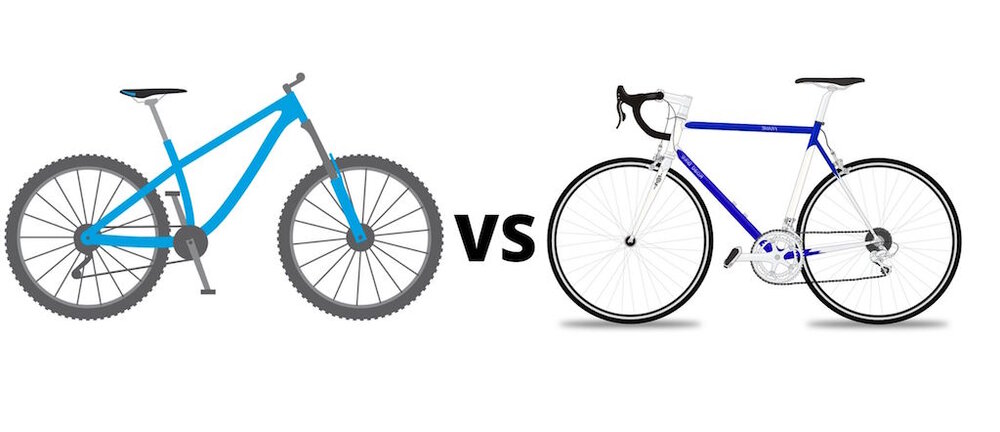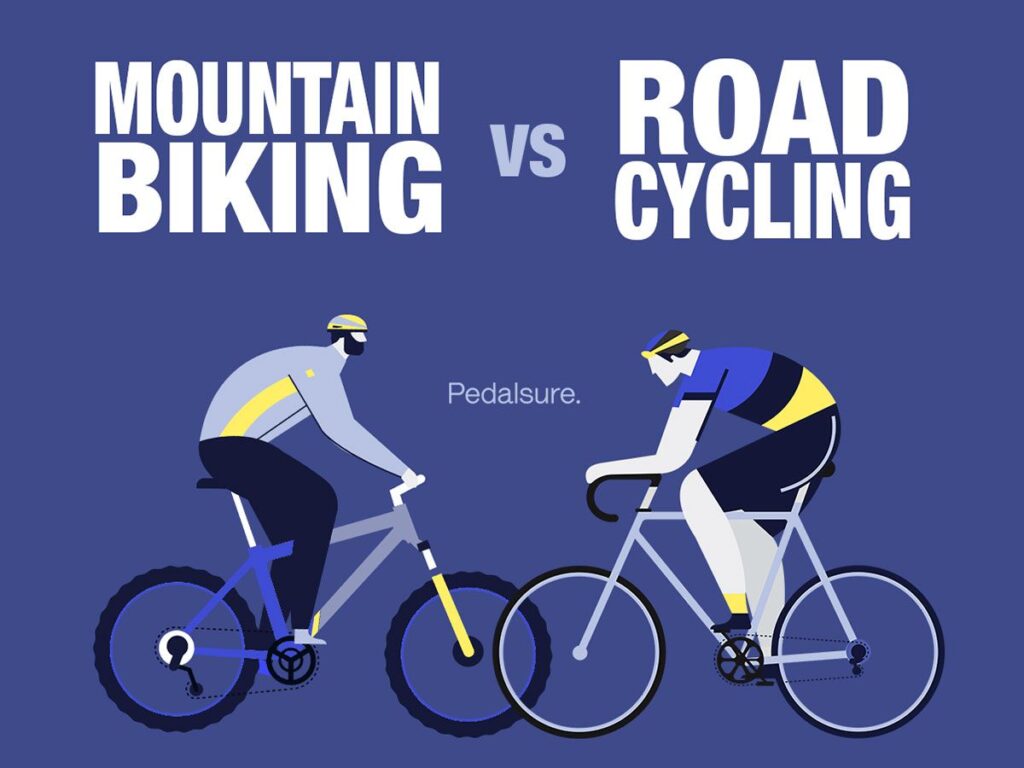Introduction:
Regarding choosing a bicycle, two popular options that often come to mind are mountain bikes and road bikes. While both bikes serve the purpose of transportation and recreation on two wheels, there are significant differences between them. This article explores the variations in design, features, and performance between mountain and road bikes, helping you decide based on your specific needs and preferences.

Design and Frame
One of the primary distinctions between mountain bikes and road bikes lies in their design and frame construction. Mountain bikes are built with durability and off-road performance in mind. They feature a sturdy aluminum or carbon fiber frame, providing strength and resilience to handle rough terrains and trails. On the other hand, road bikes are designed for speed and efficiency on smooth pavement. They usually have a lightweight frame made of materials like carbon fiber or steel, emphasizing aerodynamics to maximize speed.
Tires and Wheels
Another significant difference between mountain bikes and road bikes is the tires and wheels they utilize. Mountain bikes have wide, knobby tires that offer excellent traction and grip on uneven surfaces. These tires have a robust tread pattern, allowing riders to tackle various terrains, including dirt, gravel, and rocky trails. In contrast, road bikes have narrow, smooth tires with minimal tread. This design reduces rolling resistance, enabling road cyclists to achieve higher speeds on smooth pavement.
Gearing and Components
Mountain bikes and road bikes also differ in their gearing and components. Mountain bikes typically have a wide range of gears to handle steep inclines and challenging trails. They feature multiple chainrings at the front and a wide cassette at the rear, providing various gear ratios for uphill climbs and technical descents. On the other hand, road bikes have a narrower range of gears, emphasizing higher speeds on flat roads. They often feature a compact double or a triple chainring at the front and a cassette with closely spaced gears at the rear.
Suspension Systems
One of the most prominent features that sets mountain bikes apart from road bikes is the inclusion of suspension systems. Mountain bikes are equipped with either front suspension (hardtail) or front and rear suspension (full suspension). These suspension systems absorb impacts and vibrations, enhancing comfort and control on rugged terrains. In contrast, road bikes typically lack any form of suspension. Their rigid frame and fork prioritize efficiency and direct power transfer, optimizing speed on smooth roads.
Riding Terrain
Mountain bikes and road bikes are designed to excel in different riding terrains. Mountain bikes are tailored for off-road adventures like mountain trails, forest paths, and rough terrain. Their robust construction, wider tires, and suspension systems allow riders to navigate obstacles and enjoy the thrill of off-road cycling. On the other hand, road bikes are primarily designed for paved surfaces like city streets, highways, and well-maintained roads. They offer optimal performance and efficiency on smooth, flat terrain, ideal for long-distance rides and competitive road cycling.
Speed and Efficiency
When it comes to speed and efficiency, road bikes take the lead. Their lightweight construction, aerodynamic design, and narrow tires contribute to reduced wind resistance, allowing cyclists to achieve higher speeds with less effort. Road bikes are specifically optimized for speed and are commonly used in competitive racing and endurance events. In contrast, mountain bikes sacrifice some speed for enhanced control, stability, and versatility in challenging off-road conditions.

Comfort and Handling
Comfort and handling are two crucial aspects to consider when choosing between a mountain bike and a road bike. Mountain bikes provide a more comfortable riding experience due to their suspension systems and wider tires, which absorb shocks and vibrations from uneven terrain. They offer a more upright riding position, reducing strain on the back and shoulders. Road bikes, on the other hand, prioritize aerodynamics and efficiency over comfort. Their aggressive, forward-leaning position and narrower tires may result in a less comfortable ride on longer journeys or rougher surfaces.
Price Range
Price is often a significant factor in the decision-making process. Mountain bikes are more expensive than road bikes due to their specialized components, suspension systems, and robust construction. The price range for mountain bikes can vary significantly depending on the brand, materials used, and the level of components. On the other hand, road bikes have a broader price range, catering to different budgets and skill levels. Entry-level road bikes can be relatively affordable, while high-end models used in professional racing can be pretty expensive.
Read More:
How to Get Bike Grease out of Clothes
Conclusion
In conclusion, mountain and road bikes are two distinct types of bicycles designed for different purposes and riding conditions. Mountain bikes excel in off-road adventures, offering durability, traction, and control on challenging terrains. On the other hand, road bikes prioritize speed and efficiency on smooth pavement, which is ideal for long-distance rides and competitive cycling. Understanding the differences in design, tires, gears, suspension, and riding characteristics will help you choose the right bike that aligns with your needs and preferences.
FAQs
Can I use a mountain bike on the road?
Yes, you can use a mountain bike on the road. However, mountain bikes are optimized for off-road performance and may offer a different speed and efficiency than a road bike on smooth pavement.
Are road bikes suitable for off-road trails?
Road bikes are not recommended for off-road trails. Their narrow tires and lack of suspension make them less suitable for navigating rough terrains and obstacles typically encountered on mountain biking trails.
Can I convert a mountain bike into a road bike?
While it is technically possible to convert a mountain bike into a road bike by swapping out the tires and adjusting the gearing, it may perform differently than a dedicated road bike.
Which bike is better for beginners?
Depending on their preferred riding style, mountain, and road bikes can be suitable for beginners. A mountain bike may be better for enjoying off-road adventures and rough terrains. If you plan on cycling primarily on paved roads, a road bike would be more suitable.
What maintenance is required for each bike?
Mountain bikes require more maintenance due to their complex suspension systems and exposure to rough conditions. Road bikes, with their more straightforward design, typically require less maintenance. Regular maintenance includes checking tire pressure, lubricating the chain, and ensuring proper gear functionality.
